EN

Choreographer, performer, programmer and trainer, Isabel Barros is also the guardian of the memory and legacy of João Paulo Seara Cardoso (1956-2010), founder of the Teatro de Marionetas do Porto and the dreamer of the Museu das Marionetas do Porto. We spoke to the artistic director of this space, which reopened its doors in March after undergoing renovation and expansion work.
‘Universo Onírico’ [Dream Universe] is the title of the museum's new exhibition, which brings together puppets and props from several of the company's “iconic shows”. ‘We chose some remarkable pieces for this exhibition and created a new room in the museum, Wonderland, which perhaps summarises this dreamlike universe,’ Isabel Barros told Agenda Porto. The room was designed to provide an immersive experience, transporting visitors to the universe of puppets. According to Isabel, ‘Wonderland is an emblematic piece by João Paulo Seara Cardoso’, written from Lewis Carroll's Alice on The Other Side of the Looking-Glass. ‘You walk into this room and it's almost as if you can take a journey into that universe.’
There is also a new temporary exhibition room for invited companies, which will host two exhibitions a year. ‘I think it's an interesting way of bringing in colleagues,’ says Isabel, adding that the room has become “more intimate, more private”. Teatro de Ferro was the company chosen to inaugurate this room with the exhibition ‘Uma Coisa Menos Longínqua’, which includes two of their creations: Uma Aventura no Espaço [An Adventure in Space] (2013) and Uma Coisa Longínqua [A Faraway Thing] (2020). ‘It made perfect sense’ to start with Teatro de Ferro “because there's a long-standing connection with the company, Igor Gandra and Carla Veloso,” she says. The next exhibition to take place in this room will be by the Montemor-o-Novo company Alma D'Arame - Teatro de Marionetas.
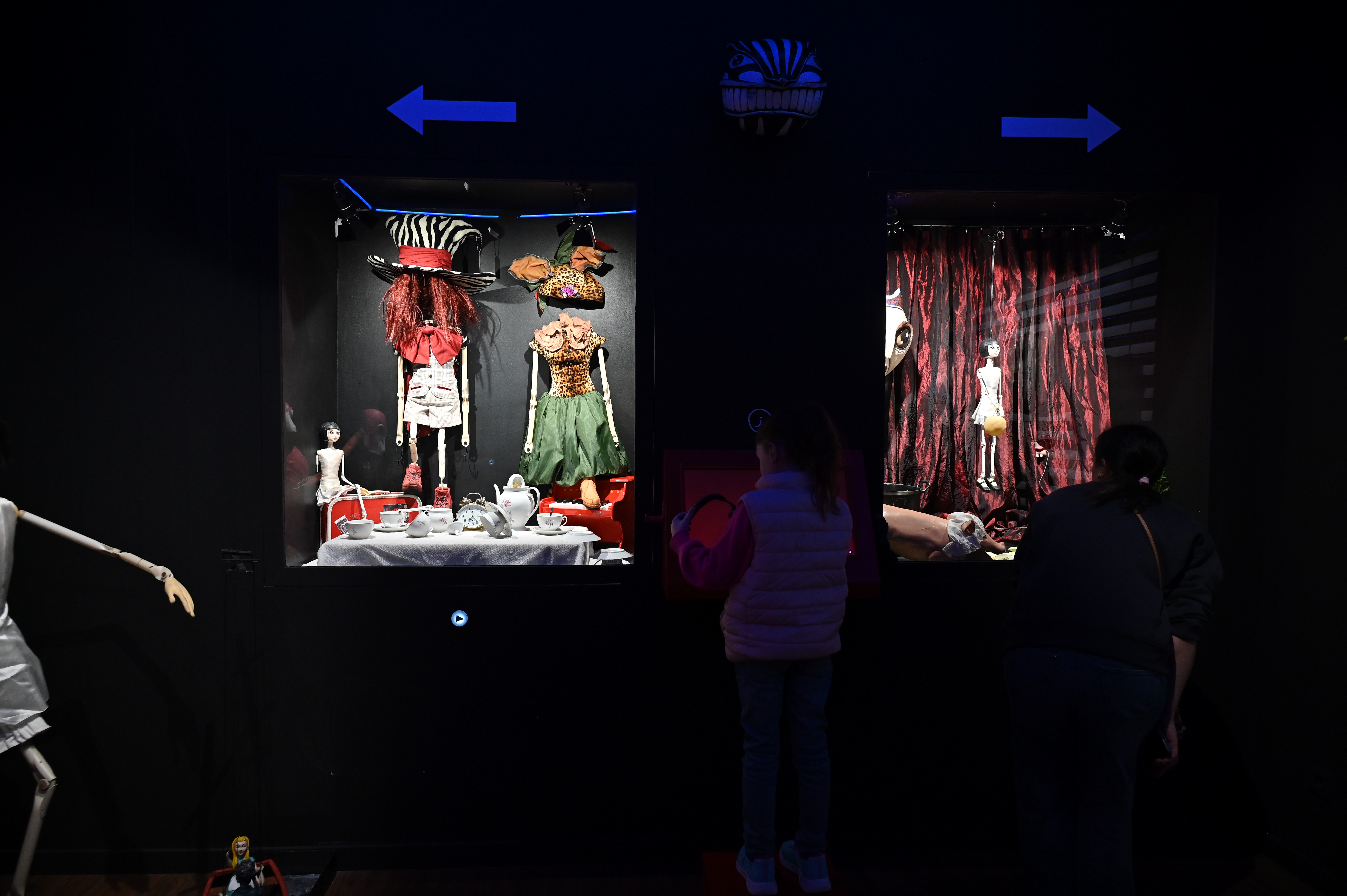
Sala Wonderland © Rui Meireles
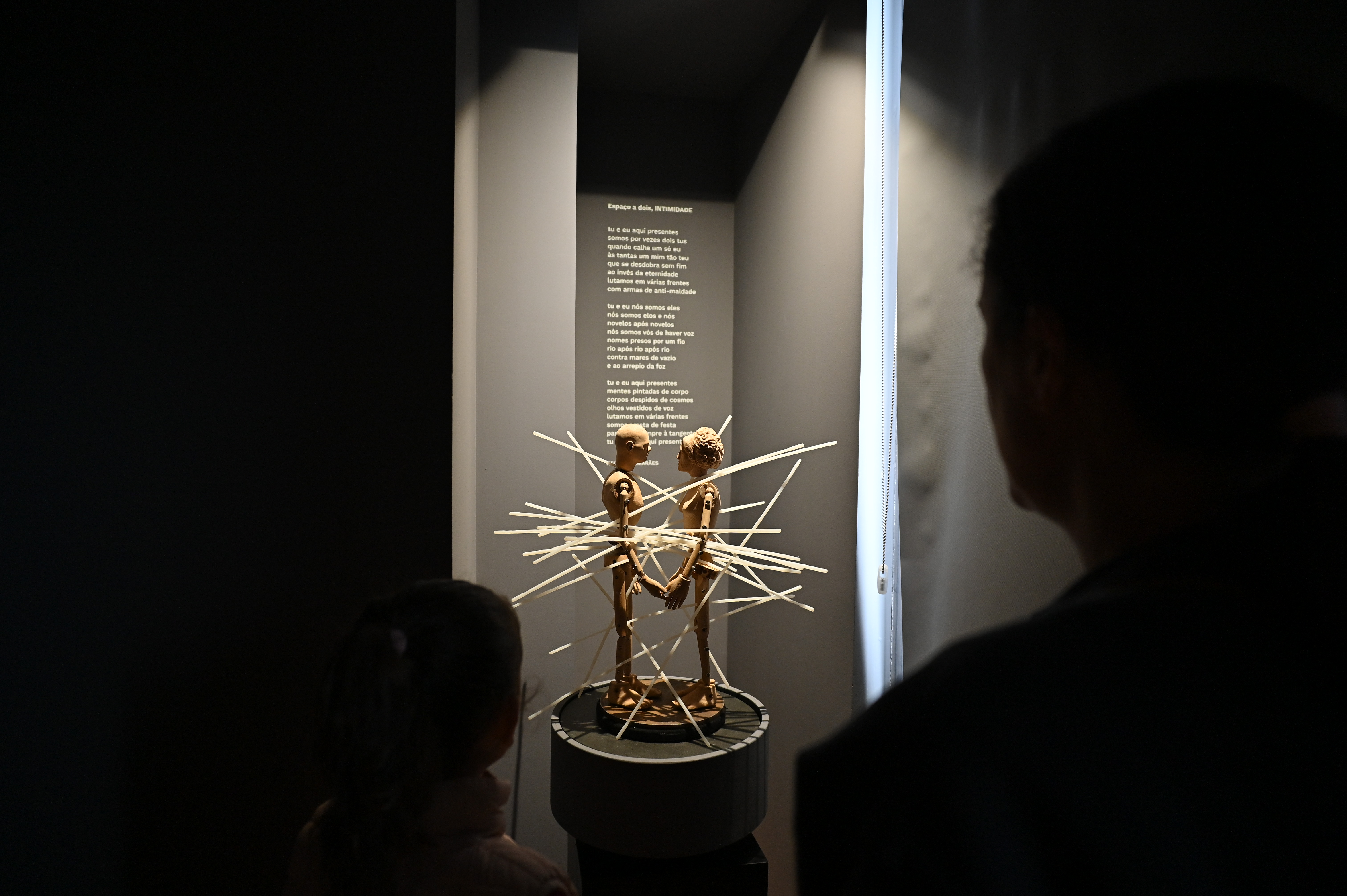
Uma Coisa Menos Longíngua, do Teatro de Ferro © Rui Meireles
Other new features include four large display cases and a mural by Júlio Vanzeler, ‘created expressly for the museum’. The artistic director also highlights ‘the entire renovation of the space, focusing a lot on new features in terms of accessibility’, emphasising that the museum is already prepared to receive visitors with hearing impairments. ‘Over the course of this year, we're also going to try to make it more accessible for people with visual impairments,’ she said. In addition, the museum is strengthening its interactive component with a space dedicated to experimentation, allowing the public to manipulate puppets.
Celebrating its 12th anniversary, the Museu das Marionetas do Porto is an author's museum centred on the work of Seara Cardoso, who founded the Marionetas do Porto in 1988. At the time, Isabel still didn't know him - they only met in 1992, an event that represented ‘a big change’ in her life.
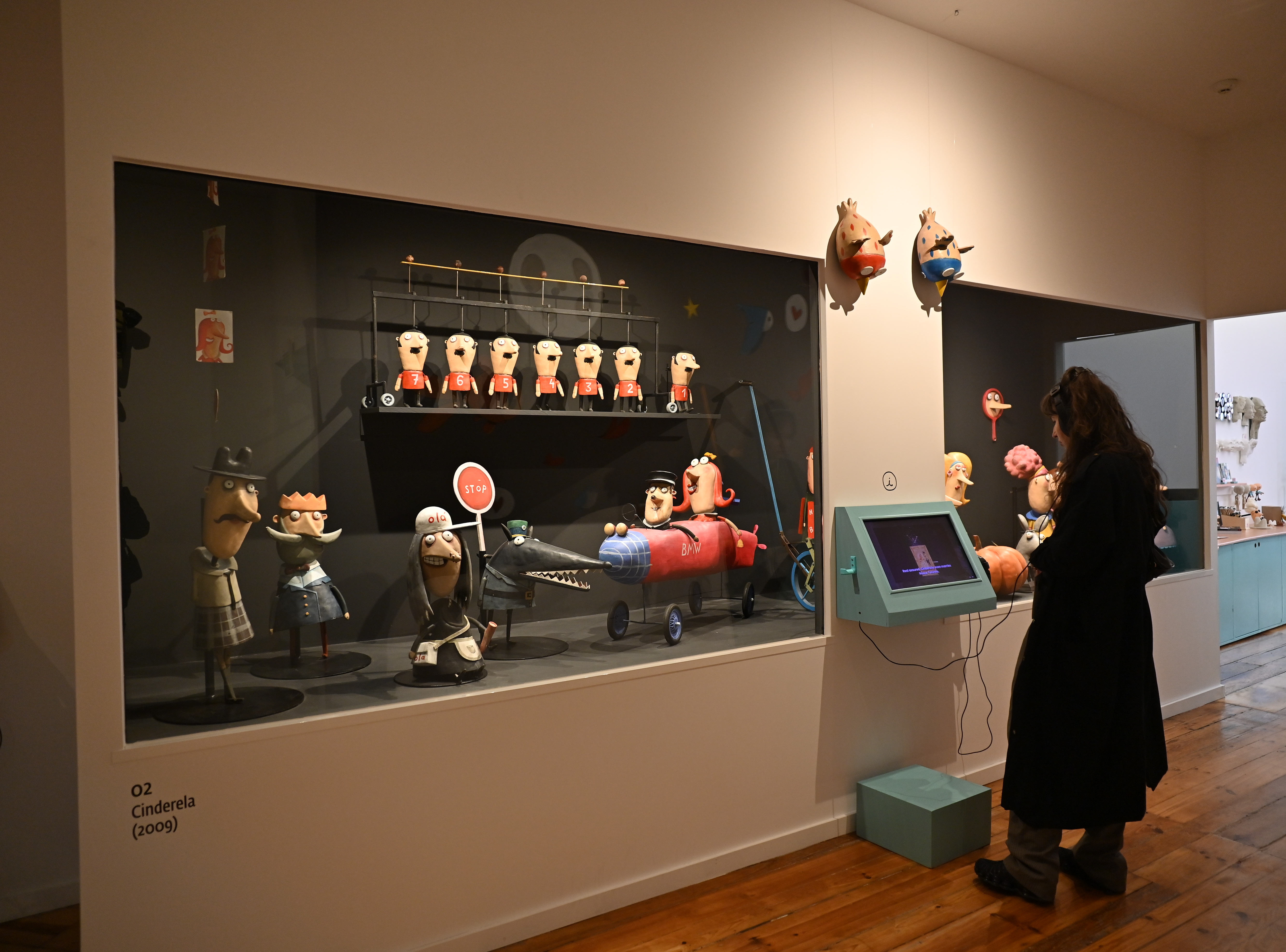
© Rui Meireles
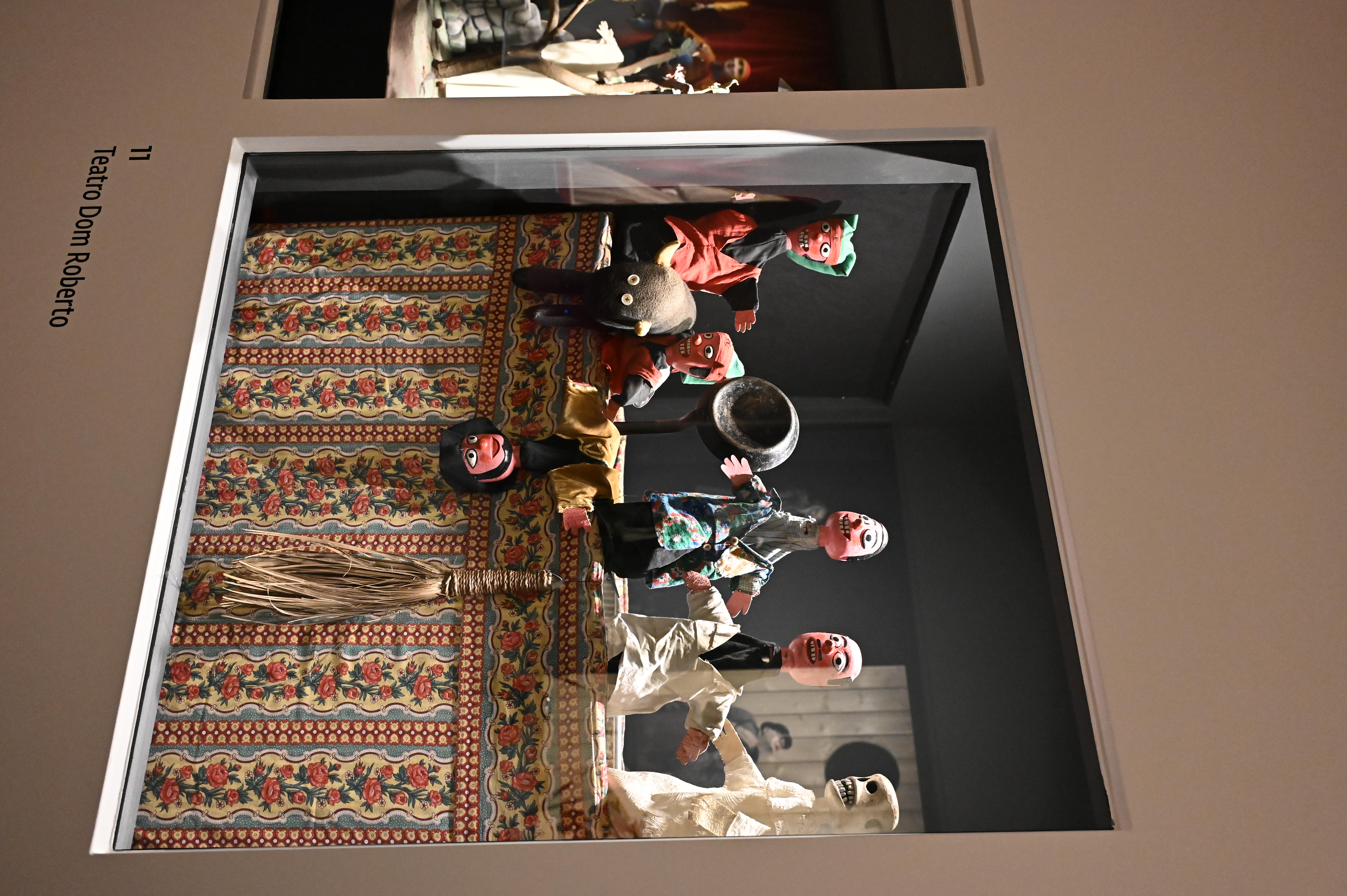
Teatro Dom Roberto
‘João Paulo started with the more traditional theatre, namely the Dom Roberto Theatre, which was passed down to him by 'Mestre' António Dias, a traditional puppeteer, and he wanted to recover this tradition.’ In this sense, in the museum, ‘we find the tent and the 'Robertos' of João Paulo, who continued to do this popular theatre throughout his life; the last time was in 2010 [the year he died],’ she recalls.
The Dom Roberto Theatre and the play Miséria, which tells the story of a blacksmith who deceives Death and is condemned to eternity, are part of the museum's permanent exhibition because ‘they are two emblematic and founding pieces of the company, and they were two solos by João Paulo’. ‘The Dom Roberto Theatre was a street play, performed in markets, squares and all public places; and Miséria was a very intimate play, which inaugurated the Belmonte Theatre. These two plays are extremely important and that's why they're always highlighted here in the exhibition,’ she emphasises.
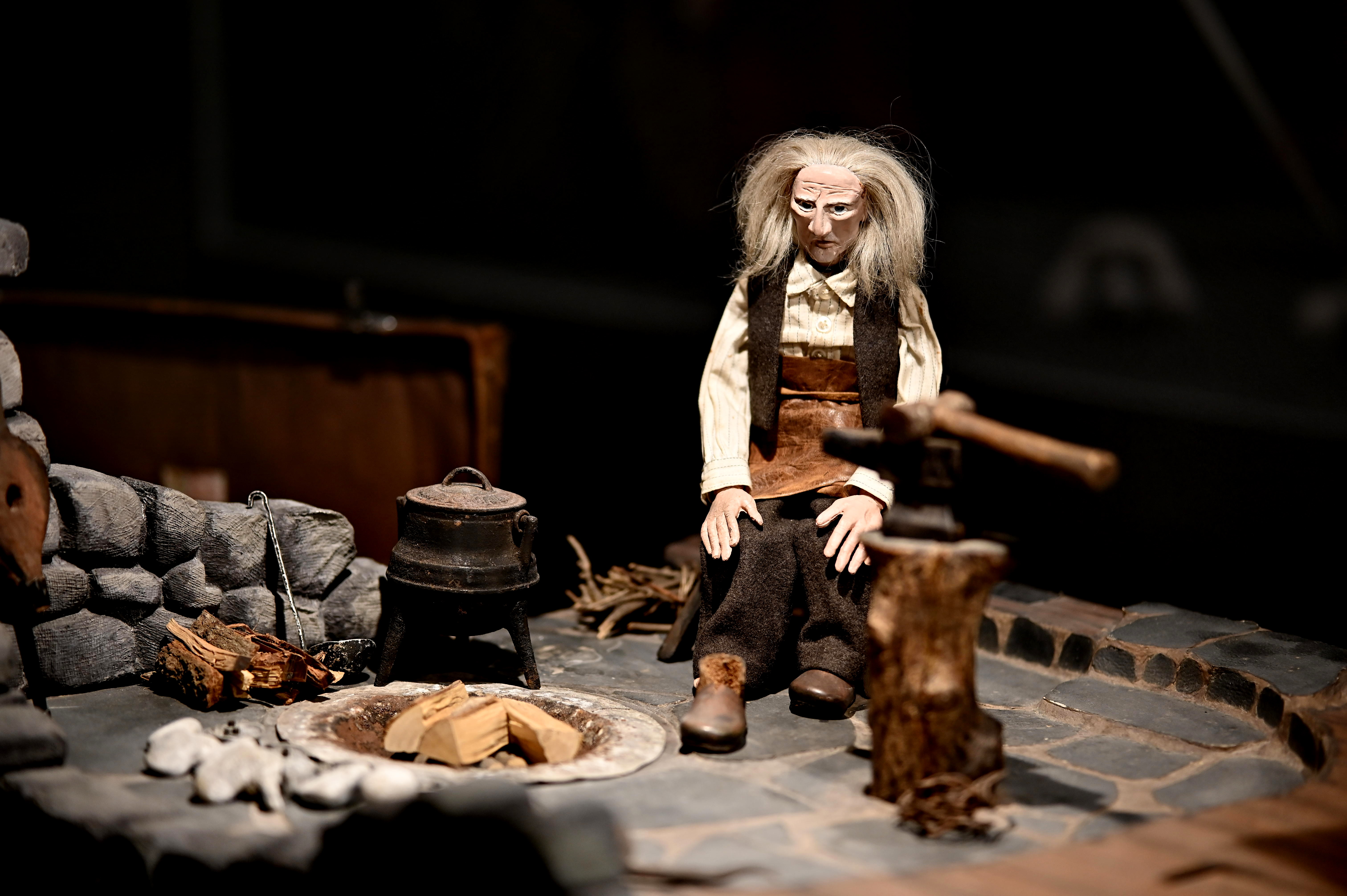
Miséria, Teatro de Marionetas do Porto © Rui Meireles
I, Body, You, City
In a choreography that requires no rehearsals, Isabel Barros has always danced with and in the city of Porto. At a ‘very early age’, when she was eight, she started ballet ‘for a medical reason’. ‘It was the orthopaedic surgeon who advised me to do ballet and walk on the beach, and that's what I've been doing all my life: dancing and walking on the beach.’ While still a teenager, in 1983, she founded the balleteatro with her sister Né Barros and Jorge Levi. ‘When I founded the balleteatro, I wasn't yet 18. At the time, I really thought I was going to change the world and that I was capable of winning everything...’ It didn't change the world, but it did help change the city in terms of contemporary dance: ‘That was incredible because, at the time, there were very few options for dance and theatre in Porto, particularly in terms of training. This immediately forced me to start going out, going to Lisbon, doing internships, going to ACARTE [the Calouste Gulbenkian Foundation] to atend shows; I was a teenager and I was already going to ACARTE meetings, going back and forth,’ she recalls.
Without ever leaving the balleteatro, Isabel moved to Paris to study. It was in 1992, when she returned to Porto, that she met Seara Cardoso. ‘Almost nine years after I founded balleteatro, I met João Paulo, who was teaching there, and he invited me to create a show with him. From then on, we had a huge passion, it was a very beautiful love story; we have two daughters, so it's something for life,’ she says. That's when puppets entered Isabel's life - to stay.
For this multidisciplinary artist, puppets ‘are much more from the universe without words, they are from the universe of movement, and they are fascinating because they are beings that allow things that actors can't do’. It's the movement and plasticity of puppets that interests Isabel. ‘That's what has always interested me, much more than when they're saying text, but that's a very personal thing.’ And she adds: ‘João Paulo worked a lot with the text, particularly in children's plays; he wrote the texts and then staged them; so we had very different perspectives, but that was also very strong in our artistic relationship; that's why we did cross-creations,’ she recalls.
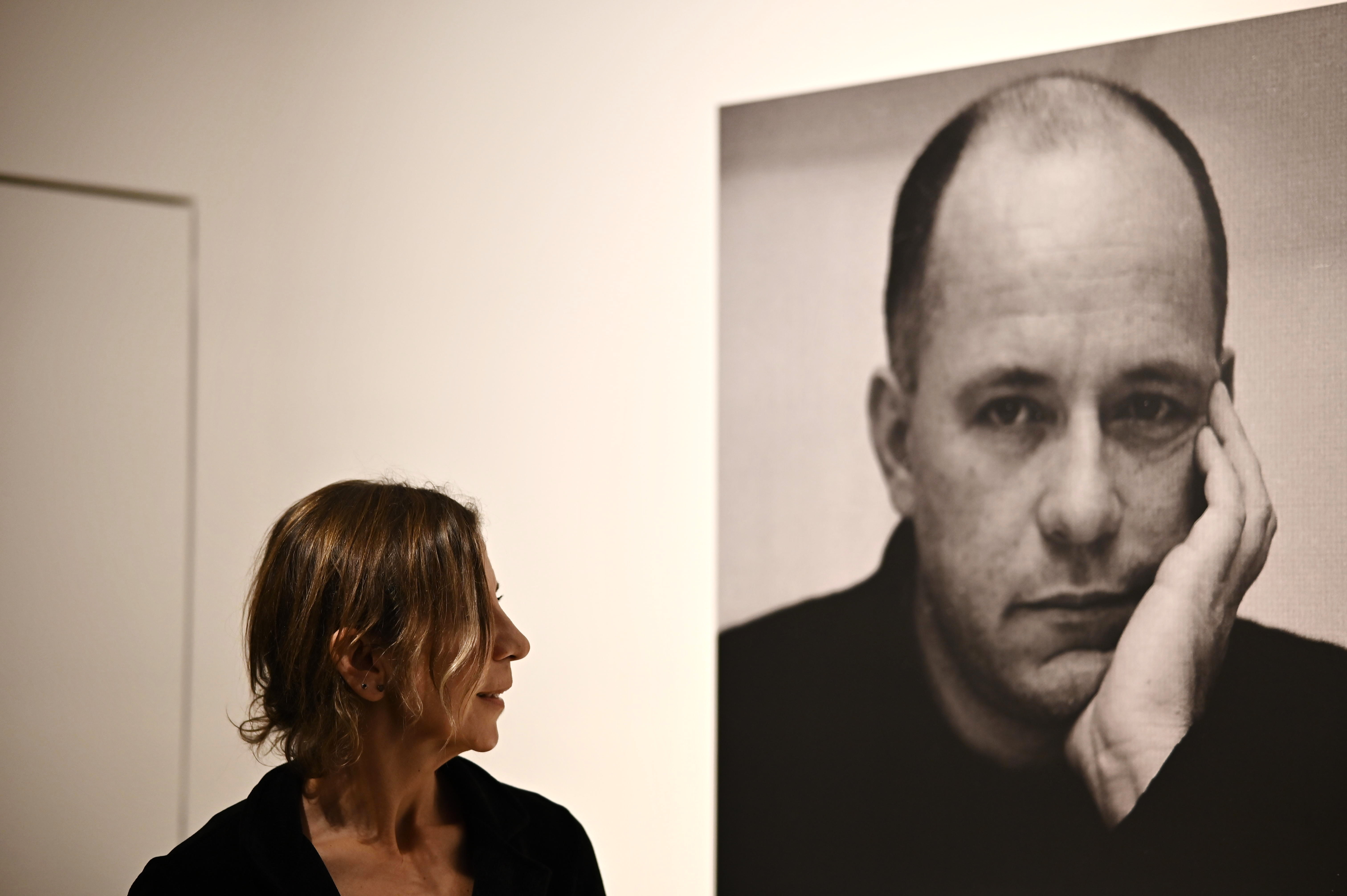
© Rui Meireles
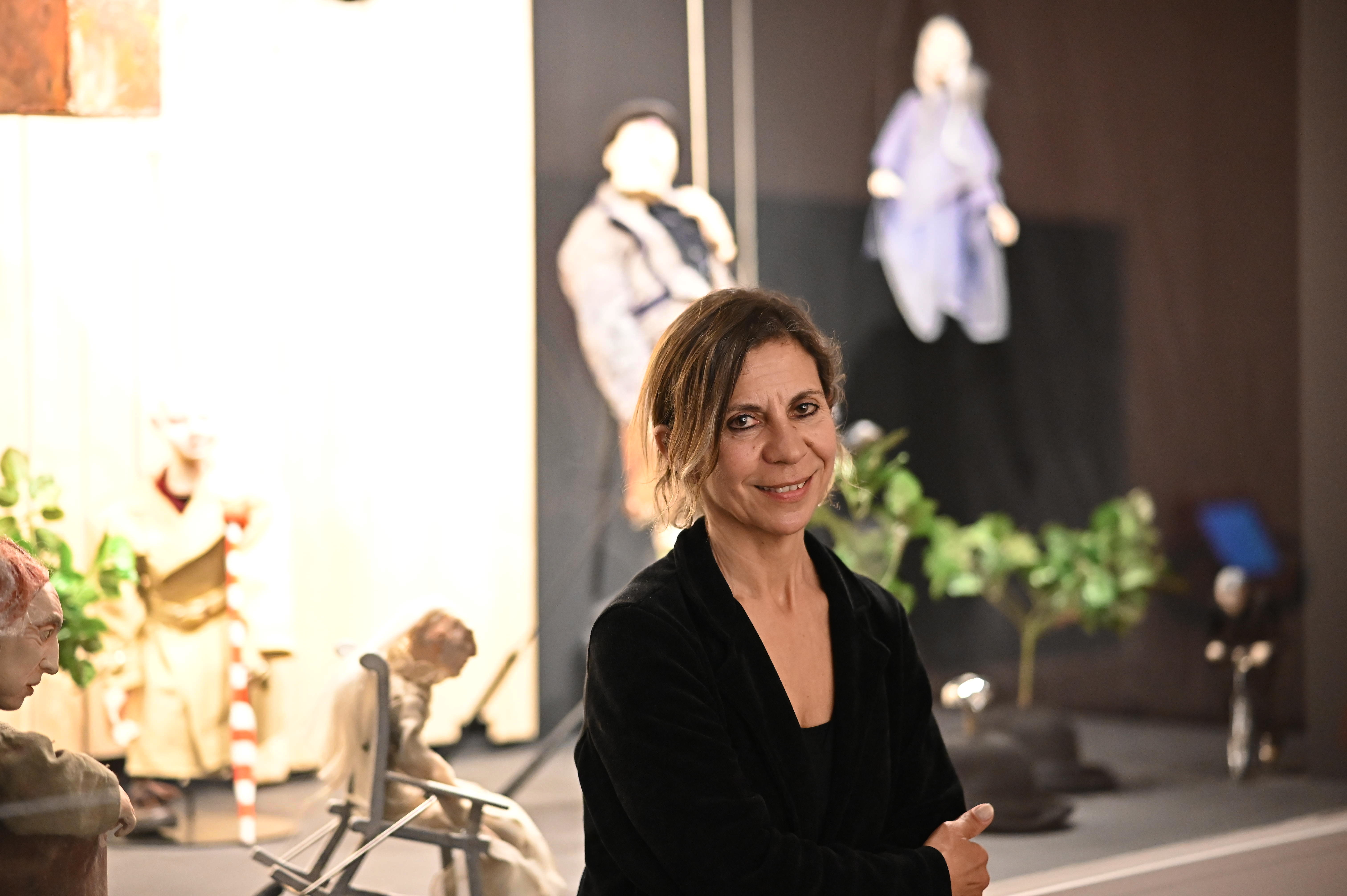
© Rui Meireles
Isabel says to Agenda Porto that she is ‘completely in love with Porto’, a city where, over the last 15 years, she has wanted to develop artistic projects with various communities, both through balleteatro and Teatro das Marionetas: ‘I wanted to add something to my work; in other words, not just work with professionals, which is more comfortable for me,’ she admits. ‘I know that when I work with professionals everything is simpler; when I work with communities, the projects are much more challenging, they take us to other territories...’
With the balleteatro she has developed projects in partnership with Domus Social [Porto City Council], namely with children and young people from neighbourhoods in Porto, as was the case with the artistic creation ‘Querido Planeta Azul’ [Dear Blue Planet], presented in March this year. ‘These are very beautiful projects, linked to music, writing, theatre and dance, so they cross all the arts.’
Since 2018, Pólo do Teatro de Marionetas has been developing artistic creations with the elderly as part of the ‘Who am I?’ project, in partnership with the Porto local authority. This is a project with a social cohesion component, whose main objective is to work on the life stories of the city's elderly population, using puppets as a vehicle for expression and inclusion. This year, this artistic creation project is with the Centro Social da Foz.
‘Every year it's with a different organisation,’ says Isabel. ‘In last year's edition, we worked with the Centro de Dia da Casa de Lordelo and I challenged a lady who crocheted to make the sweaters for all the puppets, which were beautiful,’ she says. ‘First I try to understand the group, and then I work with people according to their skills.’ The show that will result from this creative project already has a date: it will be presented on 17 July at the Teatro Campo Alegre.
‘The city is all of me, [it's whole]; in other words, as well as enjoying walking around the city, the places, I really like having been able to get to all the points, to Campanhã, to Foz, to Lordelo, to the Historic Centre, to be in that proximity. There are [projects] that are very invisible, but I really enjoy being close to them.’ She concludes: ‘Artists usually like big stages. Much of my time is spent working in this more invisible area, which then occasionally has its visibility, and which ends up being a more complete work.’

© Rui Meireles
Share
FB
X
WA
LINK
Relacionados

Exhibition


